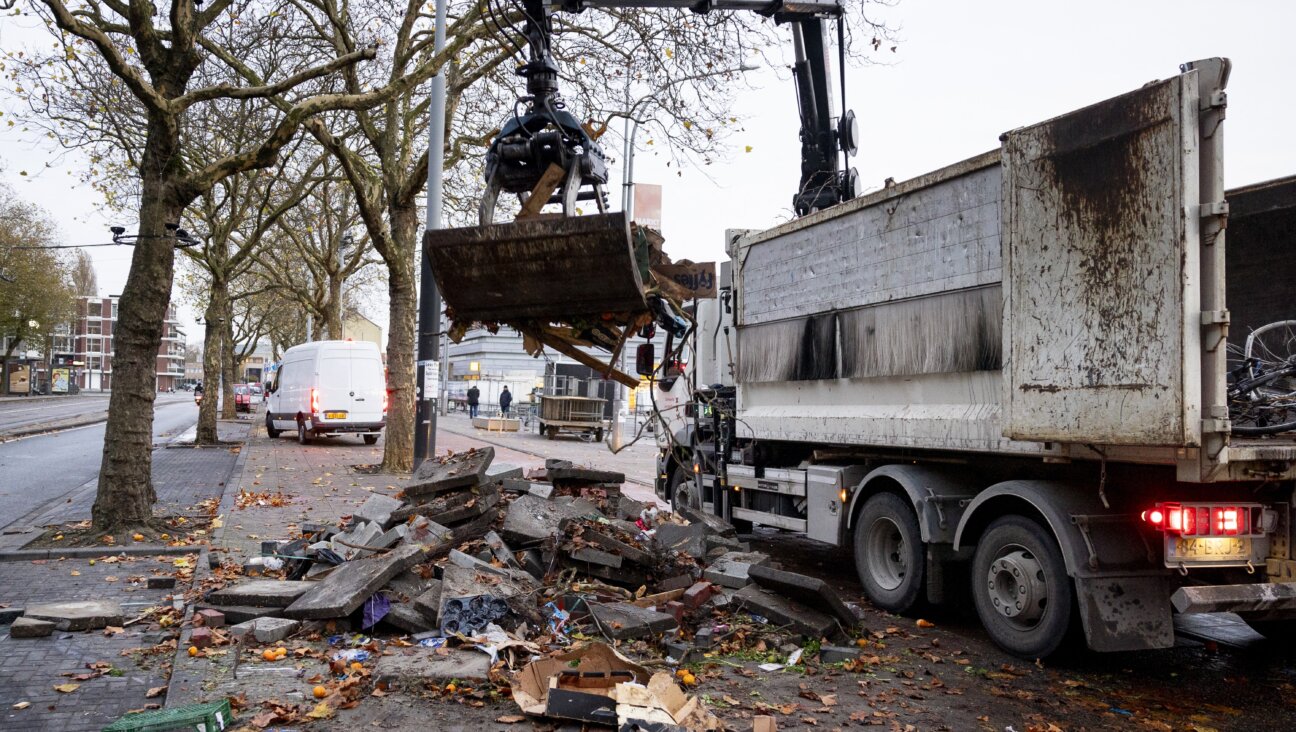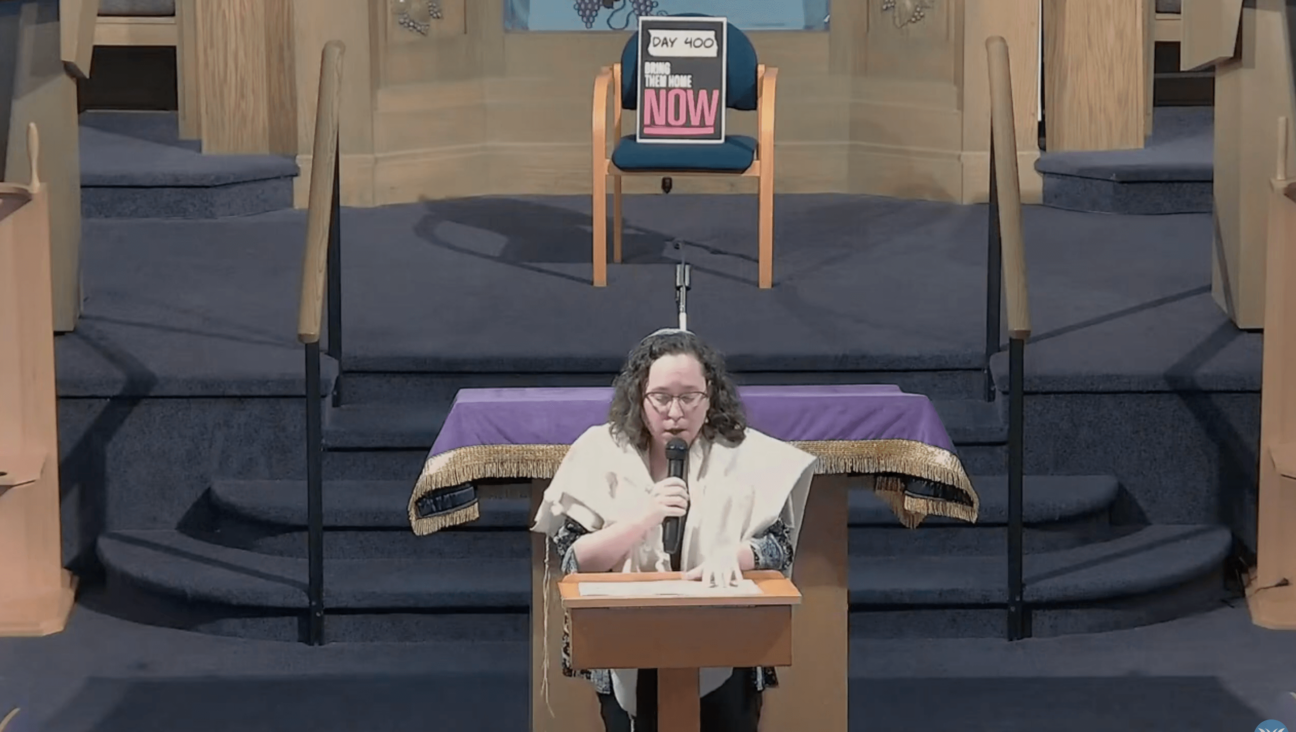Take Claims About Dead Sea Scrolls With a Grain of Salt
Once again, controversy is brewing over the famous Dead Sea Scrolls.
After widely publicized showings in Seattle and in other cities, the largest Scrolls exhibit ever is scheduled to open soon at the San Diego Natural History Museum. A sophisticated media campaign has accompanied all the current exhibits, aimed at convincing the public of the truth of an old, and now increasingly disputed, theory of the Scrolls’ origins — namely, that they were written by Essenes living at the ancient site near the Dead Sea known as Khirbet Qumran.
The media campaign is but the latest instance of a half-century of scholarly disregard for ancient Judaic culture. Like the recently propagated claim that ossuary coffins found in a Jerusalem crypt contain the remains of the family of Jesus of Nazareth and of Jesus himself, the traditional theory of the Scrolls’ origins is based not on scientific research per se, but rather on conjecture and a tendentious presentation of evidence — techniques feeding on a largely faith-based fascination with Christian origins.
Those who saw and studied the first of the Scrolls, circa 1948-1952, too quickly surmised that they had been written not by the Palestinian Jews at large but rather by the small, pietist Essenic sect, which represented only a minuscule portion of that population. The Qumran site, close to the 11 Scroll caves that stretched northward from that area, was soon thereafter arbitrarily identified as the home of this group.
A Christological element was then brought into the picture, and the resulting theory has found massive public acceptance, involving as it did claims that the desert home of the Essenes had been located and that its inhabitants in particular had helped fashion early Christian ideas. Father Roland de Vaux, the first editor in chief of the Scrolls publication project, and himself a Dominican monk, championed the theory and called Qumran an “Essene monastery.”
The later emergence of new text evidence — such as the famous Copper Scroll, which contains an inventory of buried artifacts and treasures of the Jerusalem Temple, and is still called a “mystery” by traditional Scrolls scholars — basically did nothing to change the interpretation of these manuscripts. The Qumran-Essene hunch quickly became the dominant theory, coloring virtually all researchers’ efforts to understand the Scrolls.
During the past two decades, however, scholars have increasingly come to see that the totality of evidence now favors an entirely different view: that the Scrolls were the writings of various Palestinian groups and individuals, and that a pressing historical cause — the impending Roman siege on Jerusalem of 70 C.E. — was responsible for their sequestration in desert caves.
The latest support for these conclusions comes from archaeologists at the Israel Antiquities Authority, who after 10 seasons of systematic excavations at Qumran — excavations that revealed an entirely secular settlement devoted to the manufacture of pottery — have concluded in detailed studies published in the United States and Israel that Qumran was not the home of a sect and that the Scrolls could have come only from Jerusalem and its vicinity.
The dispassionate investigation of the texts, as of the nearby archaeological site, has thus opened the way to a new understanding of Jewish thought and experience at a crucial moment in the history of this people. But traditional Scroll scholars, deeply committed in their writings to a theory created prematurely and in haste, have continued to assert their belief in that old idea.
Concomitantly, a phenomenon of great concern has developed, involving initiatives aimed at creating an apologetic defense of the old theory so as to secure its acceptance by the general public.
One example is the recent disingenuous claim — rebutted on this page in February by Katharina Galor and Jürgen Zangenberg — that the discovery of fecal remains near Qumran proves that Essenes really lived there. Another is a widely publicized DNA project announced in 1995, the results of which have been suppressed. And yet another is a dramatic 1997 Israel Museum press release stating that a newly unearthed ostracon mentioning Jericho “constitutes the first archaeological proof… that a connection exists between the Qumran site and the Scrolls found in nearby caves” — a claim based on the erroneous reading of a single word whose magnification subsequently proved that the ostracon had nothing to do with Essenes or Qumran.
To this list can be added the current Scroll exhibitions. The recommended reading lists accompanying these exhibits exclude all publications by scholars who are of the view that the Scrolls are of Jerusalem origin. Indeed, no archaeologist associated with this interpretation has been invited to lecture at these venues. The exhibits themselves, once compared with the actual findings as known today, demonstrably mislead the public.
What these efforts and others similar to them share is a fundamental, and inappropriate, disregard for ancient Judaic culture. The complex history of the Palestinian Jews on the eve of the First Revolt is being pushed aside in favor of a bizarre, Christologically colored thesis. The fervently expressed “tomb of Jesus” belief, portrayed in a self-styled documentary featuring costumed actors, is but a spillover of the same phenomenon.
Current seductive exhibitions and other efforts to the contrary, the Scrolls have, since their forced publication, been revealing many new aspects of the Jewish experience before Jerusalem burned and the Temple priesthood forever lost its power. Let us hope that the sectarian fallacy of the past half-century will ultimately be set aside, and that scholars and the public will come to focus on a profound and decisive moment in the Jewish past. Norman Golb teaches Jewish history and civilization at the University of Chicago’s Oriental Institute. He is the author of “Who Wrote the Dead Sea Scrolls?: The Search for the Secret of Qumran” (Scribner, 1996).
A message from our CEO & publisher Rachel Fishman Feddersen

I hope you appreciated this article. Before you go, I’d like to ask you to please support the Forward’s award-winning, nonprofit journalism during this critical time.
At a time when other newsrooms are closing or cutting back, the Forward has removed its paywall and invested additional resources to report on the ground from Israel and around the U.S. on the impact of the war, rising antisemitism and polarized discourse.
Readers like you make it all possible. Support our work by becoming a Forward Member and connect with our journalism and your community.
— Rachel Fishman Feddersen, Publisher and CEO






















